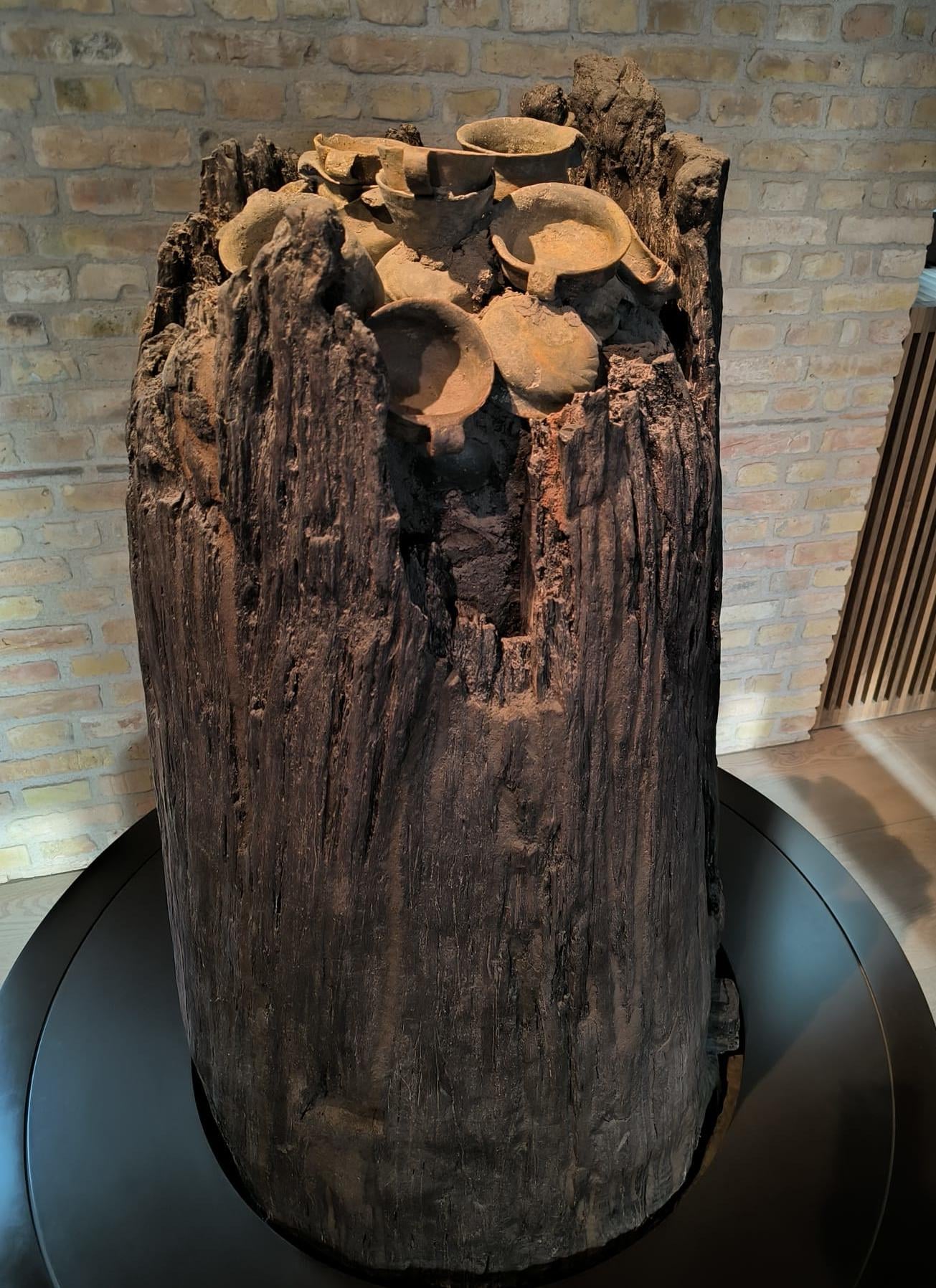
The Bronze Age in Europe, depending on the place, started around 2300 BCE, and lasted until around 800 BCE, placing this find at the tail end of the period (Late or "Young" Bronze Age). To put things in perspective, this was around 200 years before Rome was founded. And around 200 years after the oldest recorded battle in Europe (not counting "mere" massacres), that took place not too far (~160km by walk, according to Google Maps) from where the well was found.
Height: ~150 cm
Width: ~80 cm
Fascinating story behind it: Discovered in 1958. This had started out as a water well, cased with a tree stump. Pieces of earthen vessels were found at the bottom, presumably accidentally dropped while collecting water. At some point the well dried up, and the stump was used as a beehive. Later a grass lined wooden frame was constructed inside it, on which were arranged the containers we see in the pictures, as votive offerings, on top of, and side-by-side with one another. Most of the containers had remnants of plant materials, some of the "intoxicating" kind, as worded by the museum.
I'm guessing that the date and location likely mean this belonged to the Lusatian culture (pinch of salt, and please do correct me if I'm wrong). Must have been a surreal sight, the ceremony that accompanied this. Priests clad in animal skin? Incantations? Music, perhaps? Bronze swords, jewellery etc., glinting in the sun, certainly. Putting stuff in wells to make a wish evidently goes way back.
by molly_jolly
